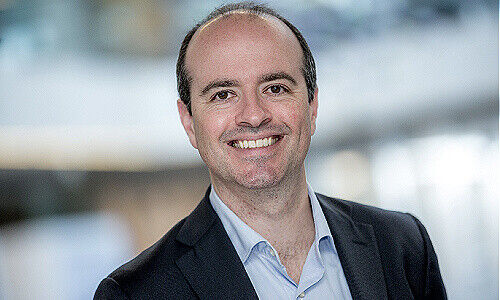Harald Walkate, Natixis’ Head of ESG, assesses what’s working, what’s not, and what needs to change in the world of ESG investing.
Harald Walkate, what’s front of mind for you when surveying the sustainable investing landscape today?
While there are some huge challenges facing the world today, these challenges have all seemingly fallen under the banner of ESG – environmental, social and governance – investing. We recognize the significance and urgency of the societal issues, but we believe tackling them in a meaningful way requires acknowledgment of the significance of the challenges, a clear diagnosis of the problems and identification of targeted solutions.
Furthermore, while the growth of ESG and the numerous investment products that have been launched can, and should, be welcomed, fears of greenwashing are not unfounded. And there are still many issues around the subjectivity of labels, definitions and ratings, as well as a lack of clear standards to measure impact, allow comparison and monitor progress.
Yet estimates suggest a whopping $6 trillion a year is needed to fully meet the UN Sustainable Development Goals (SDGs). The SDGs are the world’s to-do list of large problems to solve and have also become a key reference framework for managing and investing for positive impact.
Clearly, more needs to be done to get capital flowing and innovative thinking is certainly required when looking to shift capital into the areas that most need investment.
How can investors contribute more effectively to address these challenges?
One workable solution is «blended finance». This uses public funds to encourage private investment, the result of which can finance projects or businesses that, under normal circumstances, would be ‘un-investable’.
Typically, these projects can provide not only financial returns for investors but also economic, social and environmental benefits for local communities. And in recent years, thanks to blended finance, hundreds of millions of dollars have been poured into areas like sustainable forestry, fisheries and agriculture to help protect the natural world.
Solutions like blended finance, while highly complex, are more likely to achieve meaningful change than other impact investment approaches that have become popular. Of course, that’s only true if the market for this type of blending is spurred on by both governments and companies.
But governments have a broader role to play than simply mobilizing private capital through blended finance. Indeed, to solve sustainability challenges this will mean, in many cases, the transformation of entire industries, which is unlikely to be achieved by sustainable investing alone, and will require far-reaching public policy measures.
Governments, after all, have the primary responsibility in addressing many societal issues. This is not to suggest that investors cannot or should not play a role, but that investors who genuinely want to solve these problems need to become the true enablers for the solutions of sustainable investment.
Furthermore, investors need to have better engagement with corporate management. Shareholder engagement is perhaps one of the most promising ways to ensure investor impact, even if there are still question marks around how best to organize engagement activity, and how best to quantify the impact of engagement activities in a comparable way.
Can investors genuinely invest with impact?
We believe they can – but not every investor can. Investing in an impactful way, for example, in a way that alleviates poverty, helps to mitigate the effects of climate change, promotes diversity, allows more affordable housing to be built, and so forth, is all possible, but for it to be meaningful, for it to really make a difference, is very difficult.
It requires in-depth understanding, not only of these themes but also of how to structure complex investment vehicles, understanding of how to work with governments, development banks, philanthropists or NGOs. Only investors who truly understand how capital moves through financial markets, and how capital allocation decisions are made, can truly invest with impact.
Harald Walkate is Head of ESG at Natixis Investment Managers.
- For more information, visit our website.
Reserved to Professional Clients Only All investing involves risk, including the risk of capital loss. This material is provided for informational purposes only and should not be construed as investment advice, or a recommendation or an offer to buy or to sell any security, or an offer of services. Investors should consider the investment objectives, risks and expenses of any investment carefully before investing. The views and opinions expressed are as of the date indicated, and may change based on market and other conditions. There can be no assurance that developments will transpire as forecasted. In Switzerland: This material is provided by Natixis Investment Managers, Switzerland Sàrl, Rue du Vieux Collège 10, 1204 Geneva, Switzerland or its representative office in Zurich, Schweizergasse 6, 8001 Zürich.











